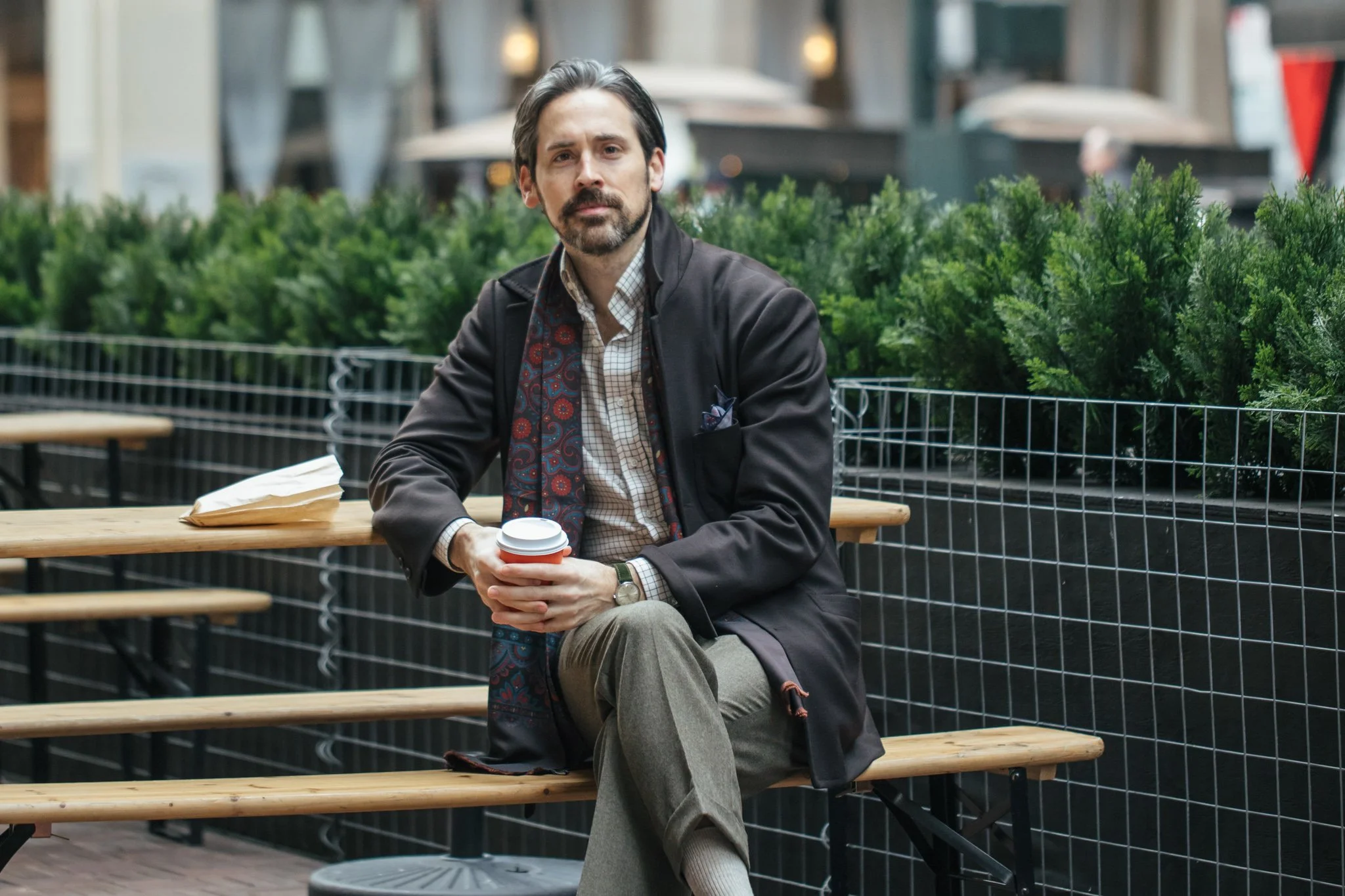I'm highlighting here a couple of favorite warm-weather jackets for this coming Summer 2025 season. First up (shown above in the header image) is perhaps my favorite of the season. This is an interesting wool/silk/cotton blend from Caccioppoli. Historically, blended summer fabrics are most often made from wool, silk, and linen blends. These blends are especially useful fabrics, as the majority wool content keeps the fabric fairly wrinkle resistant, while the silk and linen lend often lend a touch of luxurious sheen and added texture. I'd estimate 75% of the Summer jackets we make are of wool, silk, and linen.
This wool/silk/cotton blend is the first of its kind that I’ve seen, and changes the fabric handle to a near crepe-like feel. It has quite an open and gauzy weave and fairly large yarn, yet with none of the sheen, so it pairs especially well with more casual pants like denim, pure linen, and rustic summer fabrics like wool fresco.
There are only a few colors and patterns woven in the fabric quality, but I’m particularly fond of this beige and blue houndstooth. It’s ideal for folks with lighter to medium contrast complexions, and pairs naturally with light blue and denim shirts which bring out the blue in the jacket.
I’ve paired it here with a light blue washed denim shirt, as well as a white oxford shown below, which helps add a little stronger color contrast. This additional color distinction can be helpful for my own complexion, by providing a little extra contrast against the fairly light color jacket. (For a deeper dive into color contrast, I have a short piece about that here).
Next up, the below 12oz pure linen from Maison Hellard has been a favorite for a couple of years, and is part of their permanent collection. The founder Nathan Hellard describes the linen as "carefully sourced from Normandy to weave a fabric with body—designed for more than just the summer season. In close collaboration with our Italian mill, we developed a distinctive handle and a palette of exclusive colours that we hope capture a French aesthetic.”
In years past, linen of this slightly heavier 12oz weight have largely been made of stiffer Irish linen. Irish linen is a classic and beautiful cloth, but most folks find it too sharp and crisp, and it wrinkles considerably until it softens up over the years after extensive wear. Nathan and his team were at the forefront of a broader textile shift in offering more robust linens with a softer handle which tend to lightly rumple rather than sharply wrinkle. There are host of colors in muted solids and classic plaids, but this lighter “blue de france” color has been a Summer favorite.







































